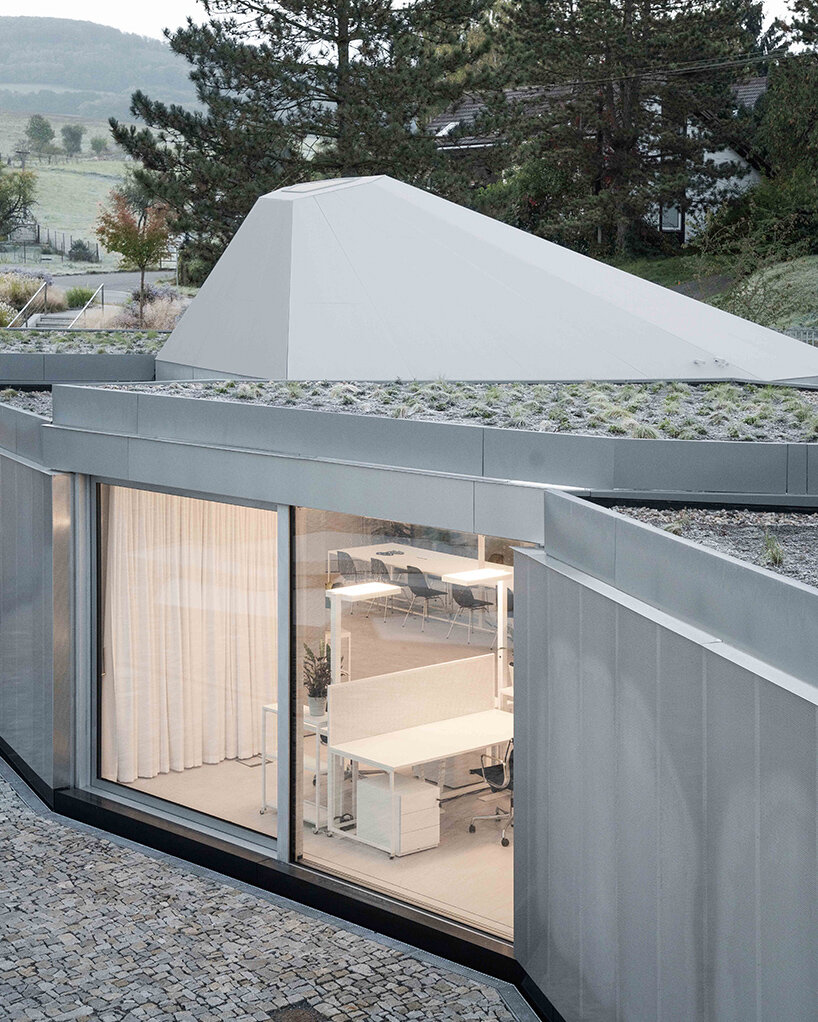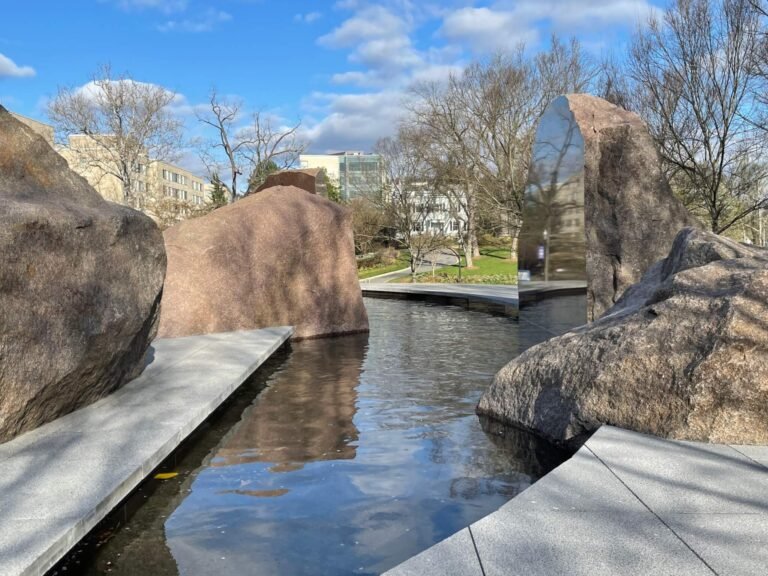chybik + kristof completes czech research center to explore modular design
a new center to research modular architecture
Czech architecture practice Chybik + Kristof explores the possibilities of prefabricated architecture with its newly completed Modular Research Center. Defined by its angular construction and unique rooftop, the project follows a long-time collaboration with module manufacturer KOMA Modular, and is sited on the edge of the company’s campus in Vizovice.
The new building introduces a workspace, open to the local community, which functions as a prototype and ‘think-tank’ to explore new concepts and applications for modular buildings.
 image by Jesús Granada | @jesusgranada
image by Jesús Granada | @jesusgranada
the angular modules by chybik + kristof
Overall, the Research Center by Chybik + Kristof takes shape with three modular elements — the floor, the container, and the roof units. The architects note that through this process, the familiar use of ‘right-angled units placed side’ was bypassed, resulting in a unique re-imagination of the standard building model, and a user-friendly prototype for modular architecture going forward.
The spatial ‘container’ units which define the interiors are assembled atop the planar ‘floor’ modules, which are anchored to the foundation. Large windows between the containers and the roof allow natural light to flood the space, keeping the workplace open and linking it with the exterior.
The rooftop comprises an assemblage of unique angular components — some hosting pockets of grass, and some opening into lofty skylights. All together, the space covers only 170 square-meters (1,830 square-feet).

image by Jesús Granada
the flexible and reconfigurable workspace
The team at Chybik + Kristof pairs the main modules with surfaces of glass to form an ‘all-inclusive spacious open area dedicated to horizontal and vertical working spaces.’ This flexible workspace avoids the negative aspects of large, open-plan offices. It can be reconfigured according to the specific needs of the users or project, and can be subdivided to create multiple adaptable and individual workstations.
The team explains: ‘As a natural continuation of the modularity concept, the furniture design allows the office equipment to be supplemented, changed, and adapted to new needs over time — pieces of equipment can be customized simply by re-connecting the elements.
‘Building materials further aid in reflecting and understanding the innovative modular concept of the research center, with its perforated surface and visible details used to the maximum extent in their natural form. As a material that KOMA manufactures and uses daily, aluminum was a clear choice for the complex, aiding the understanding of modular build principles easily.’

image by Alex Shoots Buildings | @alex.shoots.buildings 
image by Alex Shoots Buildings 
image by Alex Shoots Buildings


